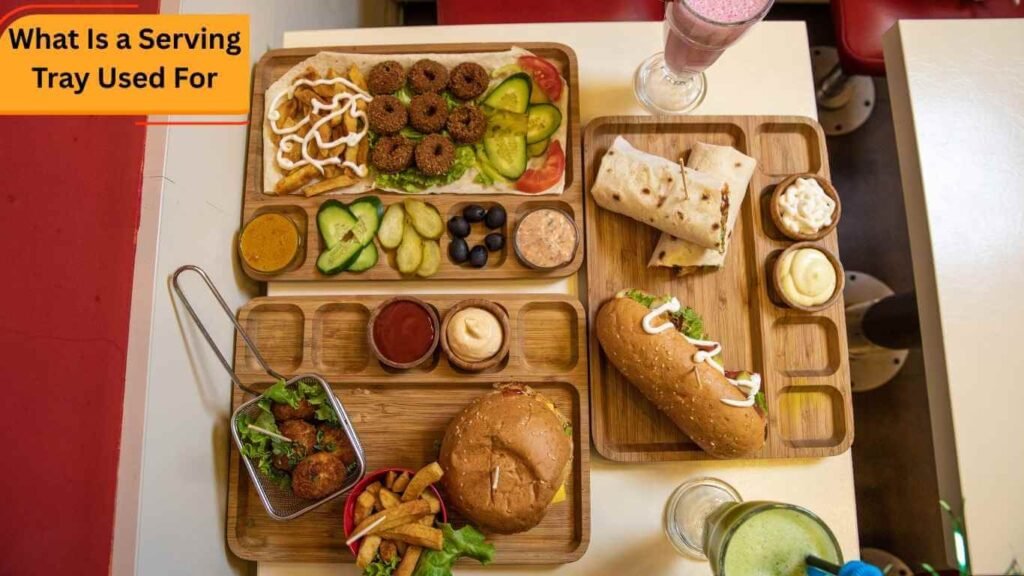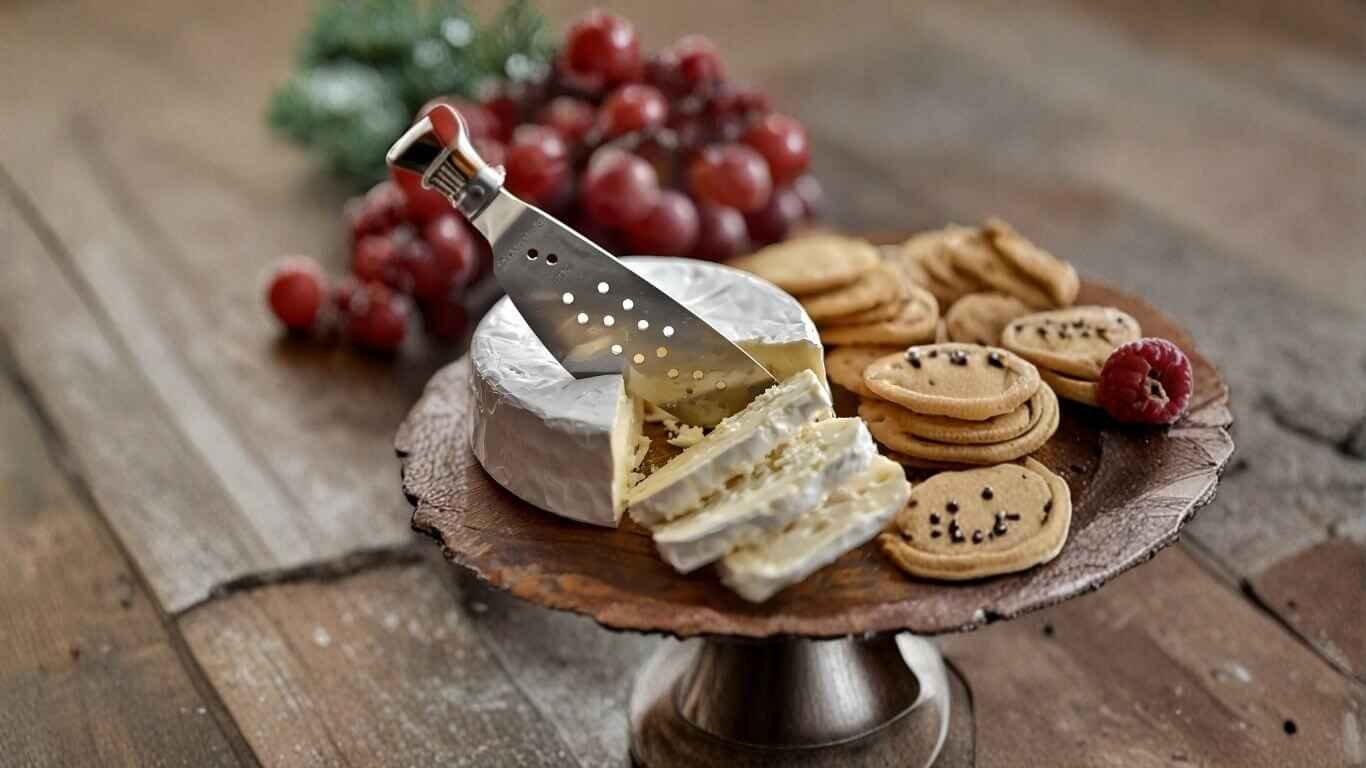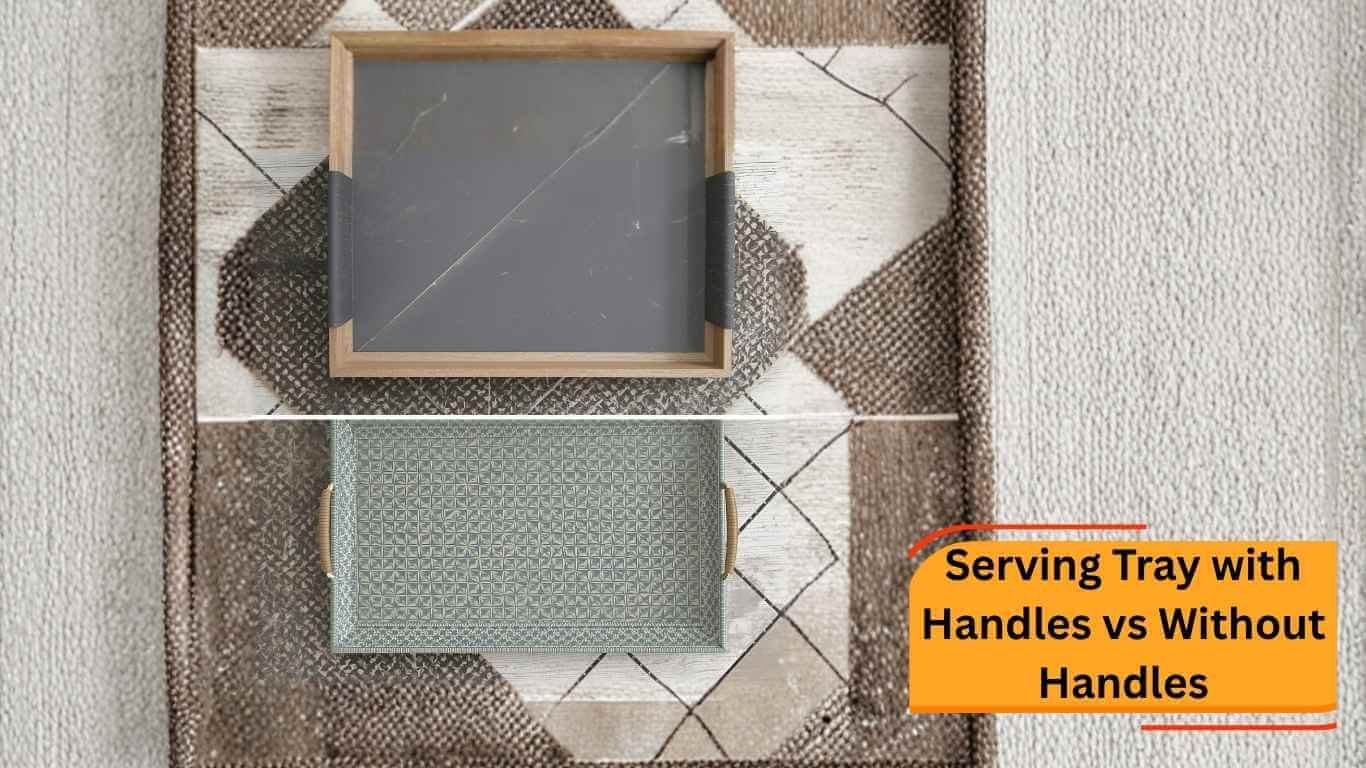From the bustling kitchens of five-star restaurants to the quiet comfort of a Sunday morning at home, the serving tray is an unsung hero of function and style. Far more than just a simple plank for carrying plates, a serving tray is a versatile tool that bridges the gap between the kitchen and the table, chaos and order, and simple living and elegant presentation. It’s an indispensable item in any hospitality setting and a secret weapon for homeowners looking to enhance their daily routines.
This guide explores the many answers to the question, “What is a serving tray used for?” We will delve into its primary roles in serving, organizing, and decorating, highlighting how this single item can bring efficiency, beauty, and order to nearly any space in your home.
The Primary Uses and Functions of a Serving Tray
While its name suggests a singular purpose, the modern serving tray is a true multi-tasker. Its uses extend far beyond the dining room, making it one of the most practical and adaptable items you can own.
Carrying and Serving Food & Drinks
This is the tray’s classic and most celebrated function. In any kitchen, bar, or dining setting, a tray is essential for transporting items with grace and efficiency. It’s the perfect vehicle for:
- Presenting Meals: Easily transport hot pasta plates, side salads, and bread from the kitchen to the dining table.
- Serving Drinks: A tray with a raised edge is ideal for safely transporting cocktails from a home bar, a pot of coffee for guests, or glasses of iced tea to the patio without risking spills.
- Showcasing Desserts and Snacks: Elevate your presentation by arranging desserts, a spread of artisanal cheeses, or a variety of appetizers on a beautiful tray. It turns a simple offering into an inviting display.
Using a tray not only minimizes the number of trips you make but also adds a touch of professionalism and care to the act of serving.
A Secret Weapon for Organizing Spaces
One of the most popular modern serving tray uses is to combat clutter. A tray provides a defined boundary, “corralling” disparate items into a neat, visually pleasing arrangement. This technique works wonders in every room:
- Coffee Table or Ottoman: Group remote controls, coasters, a candle, and a small vase of flowers on a tray to create a stylish, organized centerpiece. When you need the space, you can move everything at once.
- Kitchen Counter: Keep your cooking essentials like olive oil, salt and pepper shakers, and a jar of utensils—neatly organized on a small tray next to the stove.
- Bathroom Vanity: Transform a cluttered countertop by arranging perfumes, lotions, skincare products, and soap on an elegant ceramic or stone tray.
- Office Desk: Tame desk chaos by placing pens, notepads, paper clips, and other small essentials on a sleek tray.
- Entryway Console: Designate a tray as a “drop zone” for keys, mail, and sunglasses to keep your entryway tidy.
Elevating Entertaining and Special Occasions
A serving tray is a host’s best friend. It simplifies the logistics of entertaining and makes any occasion feel more special and thoughtfully planned.
- Breakfast in Bed: The quintessential use for a tray, perfect for romantic gestures, birthdays, or pampering a loved one who is under the weather.
- Appetizer and Charcuterie Boards: Large wooden or slate trays are perfect for creating elaborate charcuterie spreads, serving canapés, or setting up a self-serve dip station at parties.
- Outdoor Dining: Easily transport everything you need for a barbecue or patio dinner condiments, napkins, cutlery, and drinks without juggling multiple items.
- Holiday Meals: Use trays to serve special holiday dishes, create a festive hot cocoa bar, or present a beautiful assortment of Christmas cookies.
The Unsung Hero: Meal Prep and Kitchen Helper
Beyond serving, a tray is an invaluable tool for kitchen efficiency.
- Gathering Ingredients: Before starting a recipe, gather all your chopped vegetables, spices, and other prepped ingredients on a tray. This mise en place technique keeps your workspace organized and streamlines the cooking process.
- Efficient Cleanup: After a meal, use a large tray to collect dirty dishes, glasses, and cutlery from the table and carry them to the sink or dishwasher in one go. This simple habit saves time and makes cleanup far less daunting.
The Key Benefits of Using a Serving Tray
Integrating trays into your daily life offers a host of practical and aesthetic advantages that go beyond simple convenience.
Improves Presentation and Aesthetics
A tray acts like a frame for the items it holds, making them look more intentional and curated. It allows for creative plating and presentation, turning a simple homemade meal into a visually appealing experience that engages multiple senses.
Enhances Hygiene and Safety
Using a tray creates a clean barrier between food and surfaces, reducing direct contact and promoting better hygiene. It also enhances safety by providing a stable platform for carrying hot dishes, full glasses, or sharp utensils, minimizing the risk of spills, burns, or accidents.
Saves Time and Effort
The ability to carry multiple items at once is a significant time-saver. Whether you’re setting the table for a family dinner or serving drinks at a party, fewer trips between the kitchen and your guests mean more time to relax and enjoy the occasion.
Delivers Multi-functional Versatility
The true beauty of a serving tray lies in its adaptability. The same tray that holds your morning coffee can organize your desk in the afternoon and serve as a decorative centerpiece for your dining table in the evening. It’s a single investment with endless possibilities.

Choosing Your Tray: A Guide to Types and Materials
Serving trays come in a vast array of materials, each with its own unique benefits and best uses.
- Wooden Trays: Classic, warm, and durable. Wood is perfect for a timeless, rustic look and is the go-to material for charcuterie boards and coffee table decor. It requires handwashing and occasional oiling to maintain its beauty.
- Metal Trays: Sleek and modern, materials like stainless steel, brass, or silver offer a polished look. They are excellent for formal entertaining, bar carts, and catering. Most are easy to wipe clean.
- Plastic & Melamine Trays: Lightweight, affordable, and incredibly durable. Often available in vibrant colors, these trays are ideal for outdoor picnics, children’s meals, and casual, everyday use. Many are dishwasher-safe.
- Ceramic & Stone Trays: Heavier and more decorative. Trays made from marble, slate, or ceramic are perfect as stationary pieces for organizing bathroom vanities, displaying perfume, or as an elegant base for a centerpiece.
Frequently Asked Questions
When should I use a serving tray?
You can use a serving tray daily! Use it for serving meals, organizing countertops, creating decorative displays on coffee tables, and for any special occasion that involves food and drinks.
What foods work best on a serving tray?
Virtually any food works. Trays with raised edges or handles are best for carrying drinks or dishes with sauces. Flat trays are ideal for appetizers, cheese boards, and desserts.
Can a serving tray be purely decorative?
Absolutely. Using a tray for decoration is one of its most popular functions. It can anchor a collection of decorative objects on an ottoman, console table, or dresser to create a stylish vignette.
How do I clean and maintain different tray materials?
Always check the manufacturer’s instructions. Generally, wood should be hand-washed and never soaked. Metal, plastic, and melamine are often easy to clean and sometimes dishwasher-safe. Ceramic and stone trays should be handled with care and washed by hand.
Which material suits which needs?
Choose wood for warmth and rustic charm. Opt for metal for a modern, formal, or industrial look. Select plastic/melamine for durability and outdoor/casual use. Choose ceramic or stone for a stationary, elegant decorative piece.
Conclusion
There is a certain charm to serving trays made from handcrafted wood. DIY wooden serving trays tell a story of creativity, effort, and personalization, unlike mass-produced items from big-box stores. It would be wonderful to serve breakfast in bed or cocktails to guests on a tray you built yourself.
Throughout this guide, you will learn everything you need to know about making a wooden serving tray, from tool selection to finishing it safely. Creating something beautiful and useful will be our main focus, along with cost savings and customization options. Using this step-by-step tutorial, even a complete beginner can make a long-lasting tray that looks professional.



